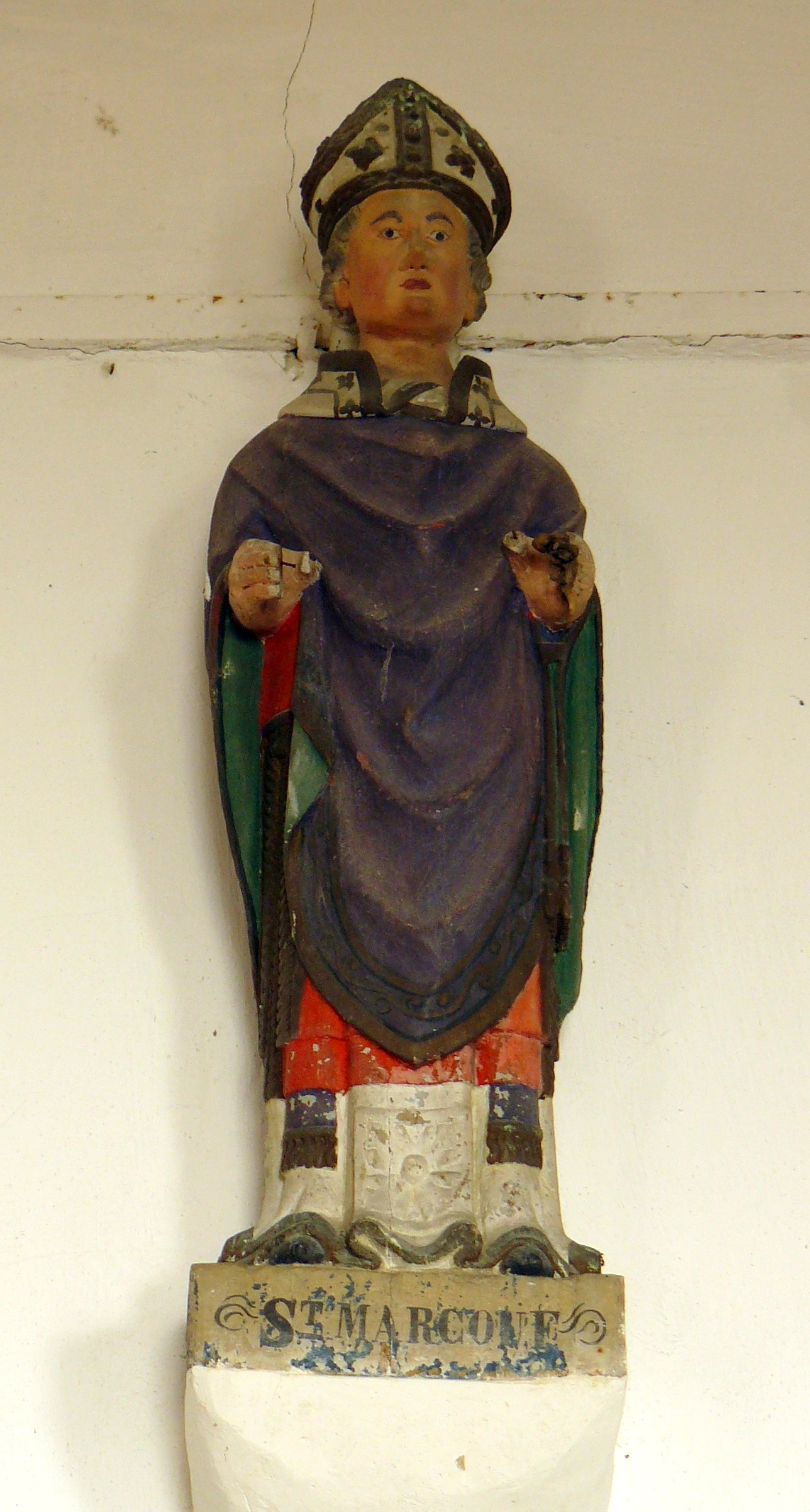Statuette de Saint Marcouf,
Saint Marcoul
Abbé
près de Coutances (✝ 558)
Marcouf ou
Marculphe.
Originaire de Bayeux il se fit moine, mais ne se coupa pas pour autant de la vie de ses contemporains. Il partit pour l'île de Jersey à la recherche d'une plus grande solitude. Mais les instances royales le firent revenir à Compiègne et à son monastère de Nanteuil, dans le diocèse de Coutances.
Voir aussi sur le site internet du diocèse de Coutances:
"Né à Bayeux à la fin du 5ème siècle, il est ordonné prêtre par Possesseur, évêque de Coutances. Il consacre tout son temps à évangéliser le Cotentin, mais aussi les îles de la Manche - il laissera à Jersey son disciple Hélier - et fonde à Nantus, aujourd'hui Saint-Marcouf-de-l'Isle, un important monastère. Saint Lô était présent lorsqu'il mourut. Ses reliques, bientôt considérées comme miraculeuses furent transportées à Corbény, où elles avaient la réputation de guérir les écrouelles."
Au pays de Coutances, vers 558, saint Marcoul, ermite, puis moine et abbé de Nanteuil, célèbre par son zèle missionnaire, l’austérité de sa vie et ses miracles.
Martyrologe
romain
(also known as Marcou, Marcoul, Marculfus)
Born at Bayeux, Gaul; died May 1, 558. Born of noble parents, Marculf was
ordained by Bishop Possessor of Coutances when he was 30 and did missionary
work in Coutances. Desirous of the eremitical life, he was granted land by King
Childebert at Nanteuil in Normandy. Unfortunately, solitude was not in store
for him. He soon attracted numerous disciples and built a monastery in the
Egyptian model over which he governed as abbot, which became a great monastery
and an important pilgrimage center after his death.
Although the monastery
grew, many of Marculf's monks continued to live as hermits. Several of them,
including Saint Helier, settled on the island of Jersey. Marculf is said to
have stayed there with them and saved the inhabitants from a raid of marauding
Saxons by praying for a violent storm, which dashed the invaders against the
rocky shore. It is said the two of Marculf's most faithful disciples--Saints
Domardus and Cariulfus (Criou)--died on the same day that he did.
In 898, Marculf's relics
were enshrined at Corbigny, diocese of Laon, to where the kings of France would
proceed after their coronation at Rheims. There the new king would observe a
novena in person or through his almoner. After touching the relics of the saint
they were able to heal those afflicted with "the king's evil"
(scrofula; a skin disease). He is commemorated in the martyrologies of
Coutances and Evreux among others. His shrine was destroyed during the
Reformation (Benedictines, Delaney, Farmer, Husenbeth, Walsh).
In art, Saint Marculf is
portrayed as an abbot touching the chin or elbow of a suppliant (curing the
king's evil). At times he may be depicted (1) confirming the king with power to
touch for scrofula; (2) holding a plantain (herbe Saint Marcoul); (3) as a
woman with devil's foot stands before him or is put to flight as he blesses
bread; or (4) with Saint Cloud (Clodoaldus) (Roeder). His relics lie at
Corbigny. Marculf is invoked against scrofula and all skin diseases (Roeder).
May 1
St. Marcou, or Marculfus, Abbot
HE was abbot of Nanteu, in the diocess of Coutances,
in Normandy, famous for miracles, especially in healing the scrofulous
disorder, called the king’s evil. He died on the first of May, in 558, and is
honoured in the Martyrologies of Coutances, Evreux, &c.
Rev. Alban Butler (1711–73). Volume
V: May. The Lives of the Saints. 1866.
